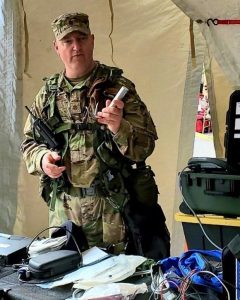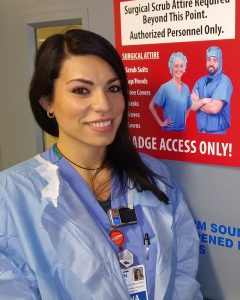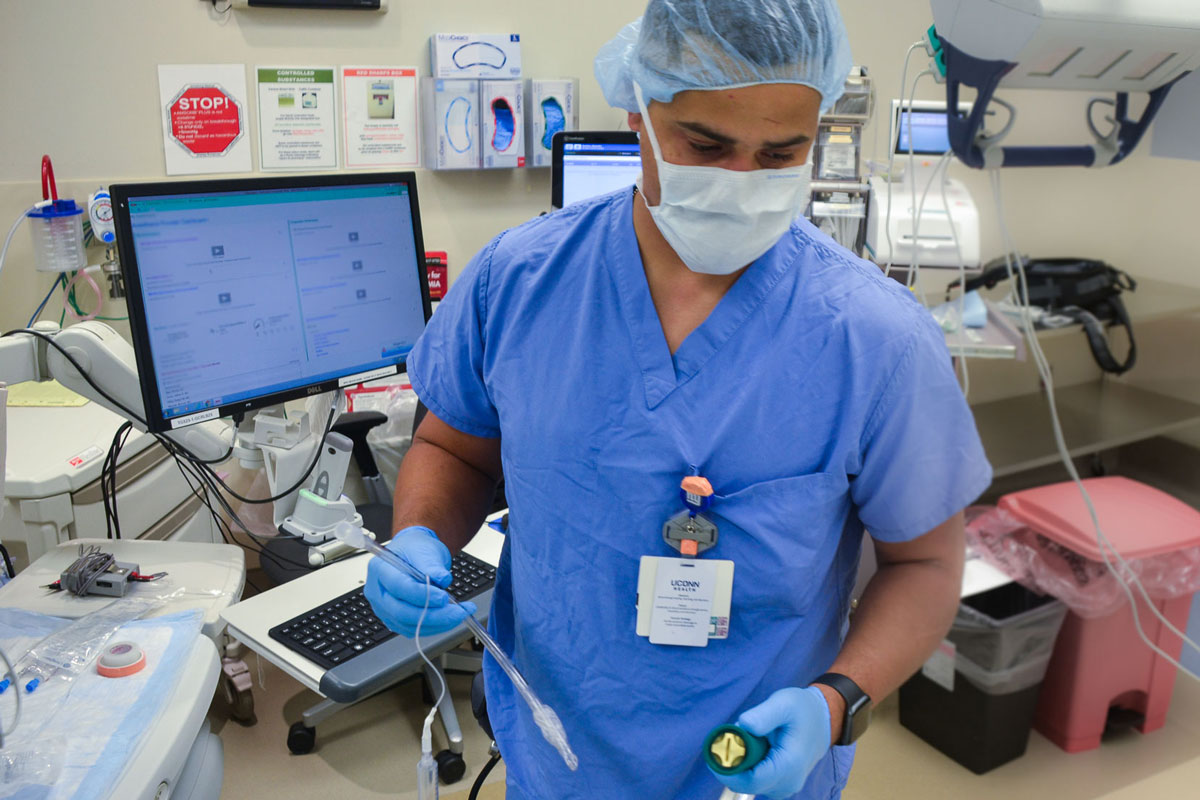
Did you know, the practice of nurses providing anesthesia goes back to the civil war? Not long after that, nurse anesthesia was established as the first clinical nursing specialty in response to surgeons’ growing need for anesthetists. Today, certified registered nurse anesthetists (CRNAs) administer more than 49 million anesthetics to patients in the United States in a typical year, according to the American Association of Nurse Anesthetists.
UConn Health has 24 CRNAs on staff. Two of them, Ed Roden and Michael Wilhelm, share some insight about their profession in advance of National CRNA Week, Jan. 19-25.

When does a CRNA get involved in my care?
CRNAs are involved in every aspect of a patient’s anesthetic care, from pre-op evaluations to post op care and follow up. We work in the operating room and labor and delivery, provide anesthetics in radiology and the gastroenterology suite, and provide care during emergencies in other units.
What’s the difference between a CRNA and an anesthesiologist?
Both CRNAs (nurse) and anesthesiologists (physicians) go through advanced anesthesia training. For physicians it’s a residency and for the nurses it’s a doctoral anesthesia program. The M.D. and the CRNA make up the anesthesia team delivering care to our patients.
Describe the training/certification path to becoming a CRNA.
CRNAs must hold a bachelor’s degree in nursing or some other science plus a nursing license, followed by a minimum of two years in a critical care environment (intensive care unit, cardiothoracic intensive care unit, emergency department), then complete the doctoral nurse anesthesia program. That requirement will change from a master’s program to a doctorate in 2025, and those currently holding a CRNA degree will be grandfathered into the program.

What are the biggest challenges/what’s most rewarding about this profession?
Challenges are the complexity of the cases we see, which can also be rewarding when our staff rises to the challenge of a difficult situation.
What’s a typical day/shift like for a CRNA at UConn Health?
CRNAs do a variety of schedules at UConn, either eight, 10, 16, or 24 hours. We can provide anesthesia for all cases from a craniotomy to pediatric dentistry and anything in between.
What else should we know about the CRNA profession?
CRNAs are involved in patient care all throughout the health care system, both civilian and military. We think the path to become a CRNA is a difficult one, but the ability to make a difference in patients’ lives is so rewarding.



